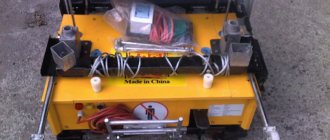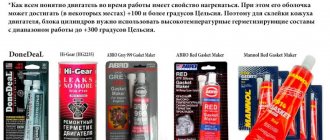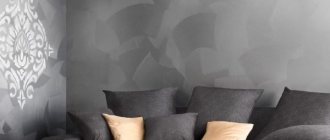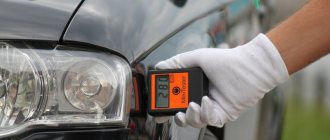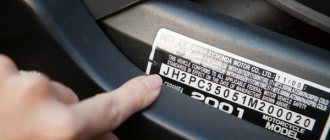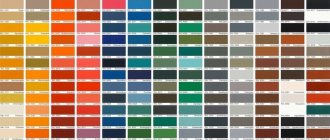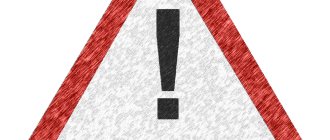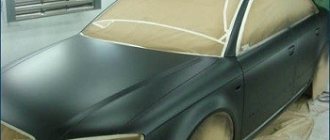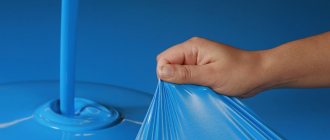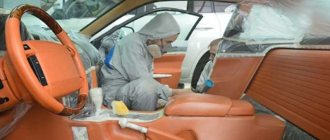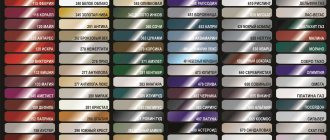Cars acquire a pearlescent color when painted using a special technology with professional paints. The shade variations are multifaceted, the most popular of them are:
- Pure white and with a rainbow tint;
- Deep red or coarse-grained;
- Blue pearl (blue metallic pearl color is a different shade);
- Gray and silver (coarse and fine grain);
- Golden with a rainbow tint;
- Combinations of silver with additional tones.
Below we will figure out how to achieve pearlescent color and what its features are.
Lada 2112 › Logbook › pearlescent paint
Features of pearlescent paint In all the variety of paint and varnish coatings, it is difficult to remember the advantages, disadvantages, properties of certain solutions, so the question often arises, what is pearlescent color?
Compared to the market value of other coloring compounds, mother-of-pearl is considered an expensive paint. This is caused by a number of specific characteristics: The original shimmering effect is the main difference between mother-of-pearl and its competitors. Reliable protection against small chips and scratches. Thanks to the additional varnish coating, the car's surface is impact-resistant, but only to some extent. Good heat resistance is ensured by multi-layer application of paint over the entire surface of the machine. The procedure is carried out using paint with a temperature identical to the heating of the body. This is an important point in car processing, since if the temperature range is unequal, the result will not be of the highest quality. Painting with mother-of-pearl is relevant in certain weather conditions and for car owners who take good care of their cars. Paint does not have broad protective properties, such as hammer or polymer paint, so it is easily damaged by strong impacts and temperature changes. There are several ways to apply pearlescent paint. The most common is sequential coloring with increasing iridescent shade. Additional varnish provides a brighter shine. Experienced car owners or those who contact a car service can choose the second painting option - mixing several colored pastes with pearlescent pigment. It is important here not to exceed the concentration of one or another ingredient. The rich palette of pearlescent paints has rich bright and pastel colors. No additional textures or frills are needed to make the car more noticeable. An important advantage is that you can prepare an exclusive coloring composition by mixing 2-3 pearlescent colors. Stages of painting with mother of pearl
Mother-of-pearl color is considered elite in the automotive industry, which is why products painted with this shade are in great demand and have a high price. Black mother of pearl is widely popular. The painting process is complex and requires patience and care: The temperature of the spray booth and the car must be the same. This will ensure better adhesion of the paint to the surface of the car and even distribution of color. The part to be painted must be cleaned and degreased. If necessary, cracks must be filled with primer and polished to zero. Mother of pearl is very similar to gloss, so any irregularities are very noticeable. Once the surface is ready for painting, you can begin applying the undercoat. The interval between cleaning and the first coat should not be long. The sooner the application of the substrate begins, the better. The shade of the substrate must match the base one. The base layer is the main pearlescent paint, which needs to be applied in 2-3 layers, not counting the varnish. The composition should be diluted with a solvent so that the mass becomes moderately fluid. The optimal option is 2:1. Painting is carried out using a spray gun. The first layer dries quickly, and after 30 minutes the next one can be applied. The paint from the pooler must be poured into a clean container and solvent added in the same ratio. It is enough to paint the car in 2 layers and proceed to the varnish coating. The first varnish layer must be applied with a minimum amount of solvent, the second - as described in the instructions. The pearlescent varnish should dry and the solvent should evaporate. It is enough to wait 30 minutes before reapplying the fixing layer.
Source
Application of the substrate
The next step is applying the base coat. To do this, there is no need to wait for the colorless base to dry. After applying it, you need to drain the remaining mixture, lightly rinse the gun, pour the substrate into it and immediately begin application, since only a semi-wet layer will ensure the correct orientation of metal inclusions (if it is a “showy” substrate) and complete absorption of pollen.
The substrate is applied in 2-3 layers, each of which should cover a larger area than the previous one. Waiting time between layers is 5-10 minutes at 20°C.
Sometimes it is recommended that after applying two covering layers, add a certain amount of “pure” mother-of-pearl to the base composition, and, gradually expanding the painting area, apply another 1-2 layers of this mixture to the surface. This solution allows you to bring the shade of the base layer as close as possible to pearlescent and thus make its border invisible. However, it should be remembered that for this the base and pearlescent layers must be prepared in the same resin system.
Another important point. Since the thickness of a three-layer coating is greater than that of a conventional two-layer coating, there is a possibility that the adhesion and performance characteristics of the coating will decrease in the future. To prevent this from happening, manufacturers, as a rule, recommend adding a hardener to the substrate - this increases the adhesion of all layers.
Do-it-yourself car painting with mother-of-pearl: technology, stages and materials
Painting a car in pearlescent color»>
You probably know what mother-of-pearl looks like on a car, since you wanted to decorate your car like that. But not everyone knows what this paint is. Pearlescent pigment is obtained by combining solutions based on mica particles - crystals of synthetic origin. In their structure they can be compared to a prism. They redirect light just like a prism. Therefore, the shade changes depending on the incidence of light; crystals, which are colored only on one side, contribute to this. Mother-of-pearl is mixed with any paint solution for cars - according to the standard, there are 100 grams of mother-of-pearl for 10 liters of car paint.
Common tone - white pearl
Transforming a car into such a seemingly simple color tone as white mother-of-pearl will require remarkable skill. The slightest disregard for technology will add rainbow shades to the color scheme.
Based on the painstaking nature of the process, a car enthusiast can choose a snowy metallic color, but the varnish will not be able to realize the effect of a white iridescence.
Coating the metal of a car with a capricious color will require careful selection of materials involved in the process. Paint will not be able to mask surface imperfections; it will only concentrate attention on them. Therefore, the logical choice of painting scheme is three-layer:
- The surface is degreased, primed, and a white base is sprayed;
- The second stage is the application of base paint with a pearlescent component;
- The final operation is varnishing.
Painting materials for a similar color scheme should be purchased from the same brand, otherwise the surface may peel off after a certain period of time.
The ideal size of crushed mica as an additional pigment in white pearlescent paint is 201-218. This size range of mica helps prevent the appearance of unwanted iridescence; the surface turns out to be white with a pearl shimmer.
We prepare the car and select materials for painting
You need to prepare the body in the same way as for regular painting. You can understand this issue in detail on our website. Preparation consists of high-quality body cleaning, grinding, and degreasing. If the current paint layer has cracks or depressions, then this must be corrected before painting with a primer. Most motorists are familiar with this process from doing chores in their home, office or apartment.
It is advisable to carry out grinding with a grinding machine, because the work will be completed faster, and the chance that you will miss some area is minimal. This list of work must be carried out in a clean and dry room, preferably with ventilation. Protective elements in the form of gloves and long sleeves are not only desirable, but necessary, since mother-of-pearl should not get into the skin.
There are several ways to apply mother-of-pearl to a car body. Probably the most common method is to paint the body with a consistent increase in the iridescent effect. An additional layer of varnish enhances the shine. The driver purchases a paste of a certain color already with mother-of-pearl. For knowledgeable people, another method is suitable - mixing pearlescent pigment with several pastes. It looks like an alchemical experiment, but the driver can prepare original paint by mixing several colors.
How to paint a car correctly
For painting, not taking into account the preparation, we will need a ready-made composition, a spray gun, varnish, a substrate and of course a solvent.
For those who are going to try their luck in making their own, we recommend purchasing car pastes from one company. After all, the compositions differ depending on the manufacturer, so mixing them will lead to damage to the entire paint and varnish material. The result of such an unsuccessful experiment is cracks and swelling on the car body.
Pearlescent paint is more capricious than regular paint, so you need to approach this work as seriously as possible. But don’t be surprised if, after a good rainfall, streaks appear on the new paintwork – you have to pay for beauty, especially for white paint. This is perhaps the only negative. The plus is originality and beauty, which is rarely seen on the road. Don't forget about the temperature of the paint booth and body. Carefully read the instructions that the pearl paint contains. And, of course, don’t forget about protective ammunition.
Source
How to paint a car chameleon, metallic, pearl? How to create a color and paint it yourself?
In this article I would like to consider in detail the process of painting a car with the effect of chameleon, metallic, mother-of-pearl, glitter, holographic and others. Manufacturers of car paints and car painting studios intimidate us with unrealistic price tags when they hear the words “chameleon”, “holographic”, “candy” and other effects, although in fact you can easily not only create such paints yourself, but also produce them well and with high quality coloring
How much powder pigment is needed to create a good color? What will the cost be?
If we consider such bright and large additives as glitter and holographic, then their consumption per car will be significantly higher: - average sedan: 200-300 grams; - SUV: 300-450 grams.
How to add powder pigment correctly?
Let's take, for example, 2.5 and 5 liters of transparent base and pour 100 grams of powder pigment into both jars. In the first case (100 grams of pigment per 2.5 liters of binder), we will have to evenly spread a very rich and opaque color evenly over the entire body with 2 layers (1.25 liters of paint on average takes 1 layer). In the second case (100 grams of pigment per 5 liters of binder), we will paint the body in 4 uniform layers, which will allow us to more likely spread the pigment perfectly and evenly over the entire car body or other surface to be painted. We highly recommend that you use a technology that involves applying more layers (lower concentration of pigment per liter of material) to obtain the best and highest quality final result. This rule works both for conventional automotive paints and for liquid rubbers and heavy-duty polyurethane protective coatings.
What is the difference between working with regular car paints, solid colors and exclusive paint?
So, as we discussed earlier, we prepare the car as if it were a regular paint job, be it auto enamel, liquid rubber or a protective coating. After all standard preparation procedures have been completed (we do not describe them in detail, since they differ for each coating and are standard for any color), we proceed directly to applying the color base we have chosen to the car body or other surface (specifically in our For example, for convenience, let's consider a black substrate; for other substrates the procedure will be the same, just the final effect will be different).
Thus, it turns out that the differences in painting are not so significant, but in the end you can create incredible masterpieces using powder pigments of various colors and effects! Come up with new unusual projects together with your clients, experiment with pigments and color substrates, create the most daring and unusual projects that simply have no analogues, in a word, make this world more colorful, brighter and kinder!
